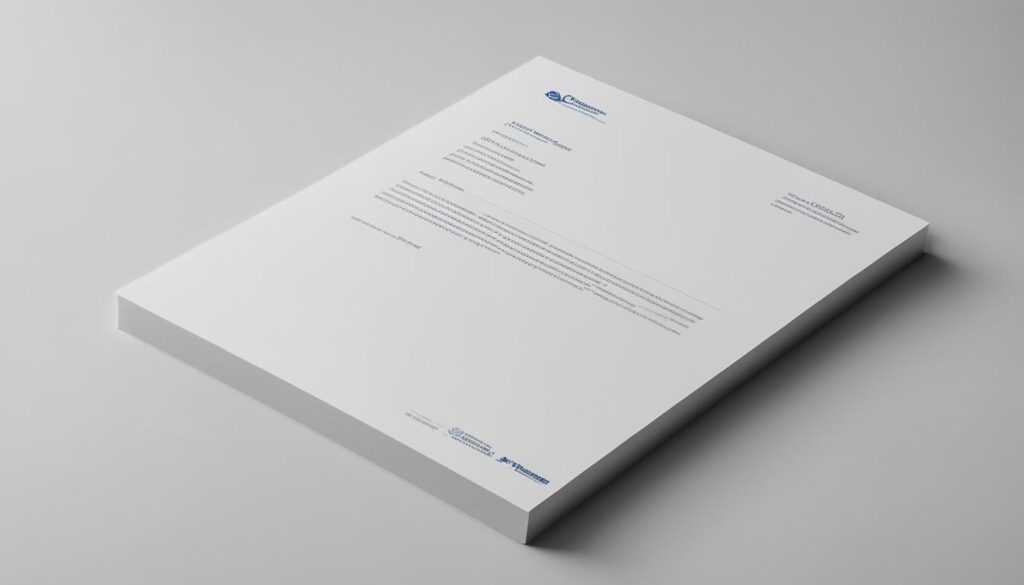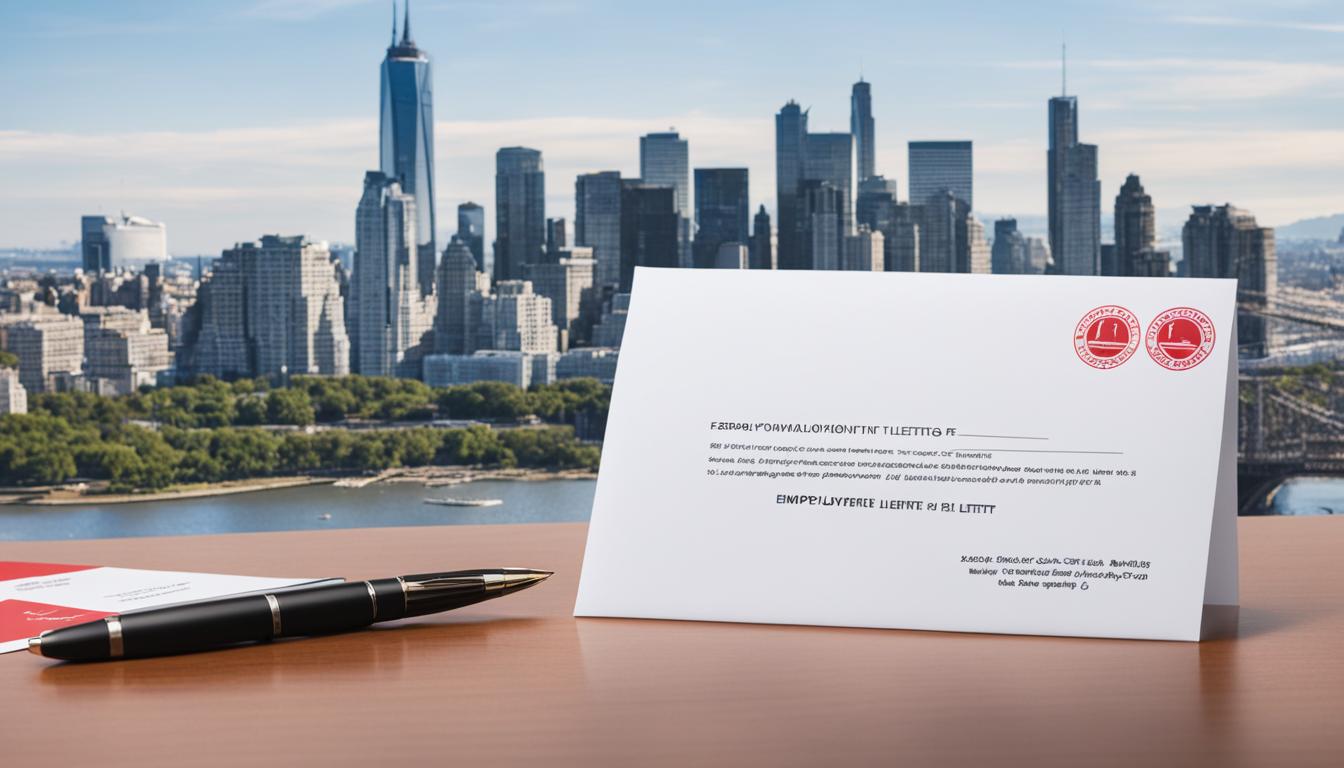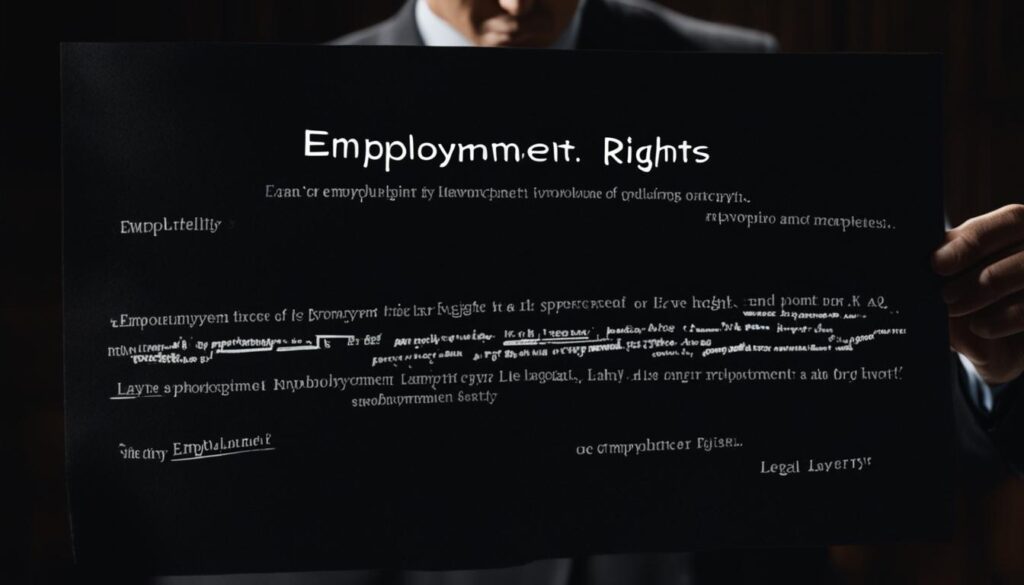Welcome to our guide on the employment letter of intent to hire. This formal document serves as a preliminary agreement between an organization and an individual being considered for a job. It outlines essential details such as job position, responsibilities, salary, start date, and other terms and conditions of employment. This letter is non-binding until an employment contract is signed and is crucial in providing both parties with a clear understanding of the job offer.
Key Takeaways
- An employment letter of intent to hire is a formal document between an organization and a job seeker.
- It outlines important details such as job position, responsibilities, salary, start date, and more.
- The letter serves as a preliminary agreement that becomes legally binding once an employment contract is signed.
- Job seekers can use the letter to express their interest, qualifications, and address any concerns.
- Employers benefit from the letter by assessing the candidate’s professionalism and communication skills. They can also ensure the candidate’s expectations align with the job offer.
Key Components of an Employment Letter of Intent to Hire
When drafting an employment letter of intent to hire, it is crucial to include all the key components to ensure a comprehensive and clear communication between the employer and the candidate. The following elements should be included in the letter:
- Parties Involved: Clearly state the names of the employer and the candidate to establish their roles in the agreement.
- Job Title: Specify the position being offered to the candidate, indicating their role and responsibilities within the organization.
- Commitment to Work: State whether the position is full-time or part-time, highlighting the expected work hours and schedule.
- Salary or Compensation Details: Clearly outline the compensation package, including salary, benefits, bonuses, and any other financial incentives.
- Payment Frequency: Specify how often the candidate will be paid, whether bi-weekly, monthly, etc.
- Start Date: Clearly indicate the agreed-upon date for employment commencement.
- Job Responsibilities: Outline the specific duties, tasks, and expectations associated with the position.
- Provisions for Time Off: Address any policies or procedures related to vacation time, sick leave, paid time off, and other forms of leave.
- Probationary Period: If applicable, mention any probationary period during which the candidate’s performance and suitability for the role will be evaluated.
- Termination Policies: Clearly communicate the conditions under which either party can terminate the employment agreement.
- Non-Compete Agreements: Include any obligations or restrictions the candidate must adhere to regarding non-competition with the employer.
- Additional Terms and Conditions: Address any other important terms or conditions relevant to the employment relationship.
The employment letter of intent should be drafted in a clear and concise manner, ensuring that all necessary information is covered. By including these key components, both the employer and candidate can have a mutual understanding of the job offer and avoid any potential misunderstandings or conflicts.

Importance of an Employment Letter of Intent to Hire
An employment letter of intent to hire is a critical document that holds significance for both job seekers and employers. Here, we explore why this letter plays a vital role in the hiring process.
Demonstrate Interest and Commitment
For job seekers, an employment letter of intent to hire serves as a compelling demonstration of their interest and commitment to the job. It provides an opportunity to highlight their qualifications and strengths, presenting them as the ideal candidate for the position.
Address Questions and Concerns
This letter also allows job seekers to address any questions or concerns that may have arisen during the interview process. By doing so, they can alleviate any doubts in the employer’s mind and reinforce their suitability for the role.
Assess Level of Interest and Professionalism
From an employer’s perspective, the letter of intent provides invaluable insight into the candidate’s level of interest and professionalism. It helps employers gauge the candidate’s genuine enthusiasm for the position, giving them confidence in their decision-making process.
Evaluate Communication Skills
The employment letter of intent to hire acts as a medium to evaluate a candidate’s communication skills. Employers can assess the clarity, professionalism, and attention to detail demonstrated by the candidate in their written correspondence, which is essential for effective workplace communication.
Inform Final Decision-Making
Ultimately, the letter of intent aids employers in making a final decision on who to hire. It provides a comprehensive overview of the candidate’s qualifications, suitability, and commitment to the role, helping employers make an informed choice that aligns with their organizational needs.
As you can see, an employment letter of intent to hire holds great importance for both job seekers and employers. It serves as a powerful tool that communicates interest, clarifies details, and allows for an informed decision-making process. Next, let’s explore some practical guidance for employees issuing a letter of intent to hire.
Guidance for Employees Issuing a Letter of Intent to Hire
When you receive a letter of intent to hire from your prospective employer, it is crucial to carefully review its contents to ensure that all the important details are accurate and align with your expectations. By conducting a thorough review, you can make an informed decision about accepting the job offer and ensure a smooth transition into your new role.
Here are some key aspects to consider when reviewing the letter of intent:
- Job Title: Verify that the job title mentioned in the letter matches the position you applied for. It is important to ensure that the title accurately reflects your responsibilities and aligns with your career goals.
- Salary: Check if the offered salary is clearly stated in the letter and matches the agreed-upon amount discussed during the hiring process. Pay close attention to the structure of the compensation, including bonuses, commissions, or other incentives.
- Job Responsibilities: Review the provided job responsibilities to ensure they align with your skills, qualifications, and career objectives. Assess whether the duties mentioned in the letter correspond to your expertise and expectations for growth and development.
- Start Date: Confirm the stated start date in the letter and check if it is feasible for you. Consider any notice period you may need to provide to your current employer and evaluate if the start date allows for a smooth transition between jobs.
- Other Conditions: Carefully examine any additional conditions mentioned in the letter, such as working hours, benefits, vacation time, and any special provisions or agreements. Ensure that all these details meet your needs and align with standard labor laws and regulations.
By conducting a comprehensive review of the letter of intent to hire, you can mitigate any potential issues and ensure a successful start to your new job. Remember, this letter serves as a preliminary agreement and acts as a foundation for the formal employment contract. If you have any concerns or questions, it is advisable to discuss them with your prospective employer before making your decision.
Guidance for Employers Issuing a Letter of Intent to Hire
When issuing a letter of intent to hire, it’s essential for employers to effectively communicate the terms and conditions of the potential job offer to the candidate. By tailoring the letter to the specific candidate and job, you can ensure a clear understanding between both parties. Here are some key guidelines to follow:
- Clearly outline the terms and conditions: In the letter, provide a detailed description of the job position, responsibilities, salary, benefits, and any other relevant information. This will help the candidate make an informed decision.
- Highlight the candidate’s qualifications: Emphasize how the candidate’s skills and experience align with the role. This will demonstrate your recognition of their abilities and increase their interest in the position.
- Keep it professional: While it’s important to showcase your company’s culture and values, ensure that the letter of intent maintains a professional tone. Avoid using casual or slang language that may detract from the formal nature of the document.
- Compliance with labor laws and regulations: Obtain a legal review of the letter to ensure that it adheres to applicable labor laws and regulations. This will help prevent any legal complications in the future.
By following these guidelines, you can create a compelling and informative letter of intent to hire that enhances your chances of securing the ideal candidate for the position.
Conclusion
In conclusion, an employment letter of intent to hire is a vital document in the hiring process for both job seekers and employers. It serves as a preliminary agreement, providing a clear understanding of the job offer and its terms. This letter allows for open communication between the parties, ensuring transparency and mutual understanding.
By following the appropriate guidelines and reviewing the letter of intent to hire sample carefully, employers and employees can facilitate a smooth and efficient hiring process. Job seekers can assess the terms, evaluate their suitability for the position, and make an informed decision to accept or decline the job offer.
For employers, an intent to hire letter demonstrates professionalism and commitment to the potential employee. It helps to establish a positive working relationship from the early stages and sets expectations for both parties involved. A well-crafted employment letter of intent to hire eliminates any uncertainties and allows employers to secure their desired candidates.
FAQ
What is an employment letter of intent to hire?
An employment letter of intent to hire is a formal document that outlines the specific job position, responsibilities, salary, start date, and other terms and conditions of employment.
What are the key components of an employment letter of intent to hire?
The key components include the parties involved, job title, commitment to full-time or part-time work, salary or compensation details, payment frequency, start date, job responsibilities, provisions for time off, probationary period, termination policies, non-compete agreements, and any additional terms and conditions.
Why is an employment letter of intent to hire important?
It demonstrates the job seeker’s interest and commitment to the job, allows them to emphasize their qualifications, and provides an opportunity to address any questions or concerns. For employers, it helps assess a candidate’s level of interest and aids in making a final hiring decision.
What should employees review in an employment letter of intent to hire?
Employees should review the job title, salary, job responsibilities, start date, and compliance with local labor laws and regulations. It is important to ensure that their expectations align with the terms outlined in the letter.
How should employers issue an employment letter of intent to hire?
Employers should tailor the letter to the specific candidate and job, clearly outlining the terms and conditions of the potential job offer and ensuring it is clear, concise, professional, and compliant with labor laws and regulations.




